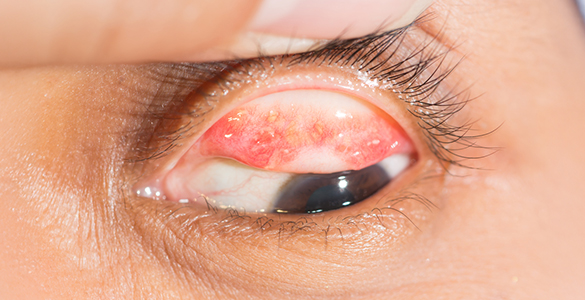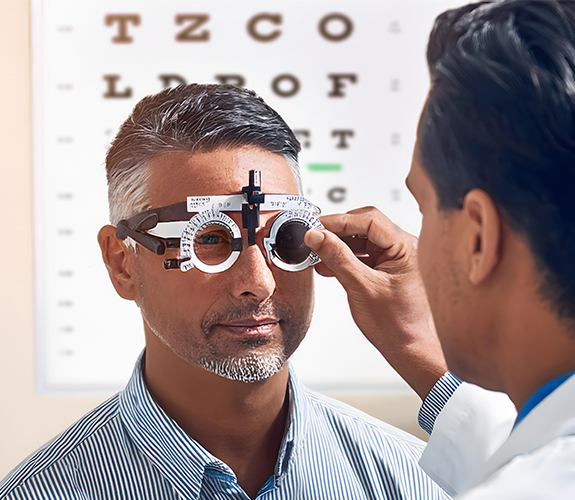Your eyes are the windows to the world, but what happens when those windows become obstructed? Symblepharon, a rare and possibly debilitating eye disorder, can create aberrant adhesions between the eyelid and eyeball, reducing vision and quality of life. You may be dealing with more than just a minor eye problem if you have ever experienced a chronic irritation in your eye or seen your eyelid clinging to your eyeball.
In this article, we'll go over everything there is to know about symblepharon, from its causes and forms to the most effective treatments offered at hospitals in pitampura. You can prevent possible problems and take proactive measures toward improved eye health by being aware of these factors.
What is symblepharon?
Symblepharon is an eye disorder affecting the conjunctiva of the eye. That is the thin, transparent membrane that covers your eye's white component (the sclera). Your eyelids' insides are lined with it as well. There is an adhesion between these two layers of your conjunctiva called a symblepharon (plural: symblephara).
When your eye tissues enlarge and adhere to one another due to extreme inflammation, you get symblepharon. Scars may develop following inflammation, permanently joining the layers. One or more adhesions may be present in you. Recurrent episodes of symblepharon can be brought on by persistent inflammation in the eye.
Symblepharon types
Symblepharon can be characterized according to the degree of adhesion between the eyelid and the eyeball. Understanding the type is critical for establishing the best treatment plan.
- Simple symblepharon: Adhesions form between the conjunctiva of the eyelid and the conjunctiva of the eyeball and may be limited to a small area.
- Cicatricial symblepharon: It is characterized by more extensive adhesions and is frequently caused by conjunctival irritation and scarring.
- Fornix Symblepharon: The term "fornix symblepharon" specifically describes adhesions that develop in the conjunctival fornices, which are the pockets or recesses that separate the eyeball from the eyelids.
- Partial symblepharon: This type of symblepharonis characterized by adhesions that cover only a section of the conjunctival surface. The location and scope may differ.
- Total Symblepharon: In total symblepharon, adhesions cover the entire surface of the eye, making it the most severe type of symblepharon.
Causes of Symblepharon
Symblepharon can be triggered by various factors, typically involving trauma, inflammation, or scarring. Some common causes include:
- Eye Injuries: Physical trauma, chemical burns, thermal burns, and other traumatic eye injuries can harm the conjunctiva and cause scarring. The eyelid may adhere to the eyeball as a result of the ensuing scar tissue.
- Inflammatory Diseases: A number of inflammatory disorders, such as conjunctivitis, ocular cicatricial pemphigoid, or Stevens-Johnson syndrome, can result in persistent inflammation of the eye, which raises the possibility of scarring.
- Infections: If severe eye infections like keratitis or conjunctivitis are not treated or are not well managed, they may also lead to symblepharon.
- Surgical Procedures: Scar tissue can occasionally grow as a result of eye procedures, which may cause symblepharon. To avoid this problem, proper post-operative care is essential.
Treatment Options for Symblepharon
Consulting an eye specialist in Pitampura is essential for diagnosing and treating symblepharon effectively. The treatment plan may vary depending on the severity and type of the condition. Common treatment options include:
- Medication and Eye Drops: In mild instances, corticosteroids, lubricating eye drops, or anti-inflammatory drugs may help lessen discomfort and stop further adhesion.
- Surgical Intervention: To remove the adhesions and restore normal eye function, surgery may be required for moderate to severe symblepharon. Conjunctival grafting is one method for covering the injured region and preventing re-adhesion. It involves using tissue from another location of the body or eye.
- Amniotic Membrane Transplantation: Sometimes surgeons make use of amniotic membrane grafts to enhance healing and minimize inflammation. This method aids in halting the development of scar tissue again.
- Post-Surgical Care: It's important to adhere to a rigorous post-operative care plan, which includes utilizing the recommended eye drops and scheduling follow-up visits with a Pitampura eye specialist. The chance of recurrence can be considerably decreased with appropriate post-operative care.
Why Choose Saroj Hospital for Eye Care?
Saroj Hospital is a leading hospital in Pitampura that offers comprehensive eye care services, including treatment for symblepharon. Our team of experienced eye specialists in Pitampura is dedicated to providing personalized care and utilizing the latest advancements in ophthalmology.



